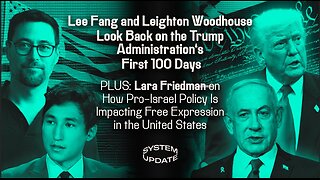Premium Only Content

먹어서 병을 이기는 법, 스스로 치유, 윌리엄 리, 혈관신생, 암진단, 미세 악성종양, 방어체계, 갑상샘, 조혈모세포, 방사능, 암치료, 재생속도, 치유력, 면역력, 줄기세포란
https://www.youtube.com/watch?v=FN5kLkCY8QE&list=PLEAeUfw1DucBDUbqQyvqpQqEaOg9Zy-J-&index=10
먹어서 병을 이기는 법, 스스로 치유, 윌리엄 리, 혈관신생, 암진단, 미세 악성종양, 방어체계, 갑상샘, 조혈모세포, 방사능, 암치료, 재생속도, 치유력, 면역력, 줄기세포란
먹어서 병을 이기는 법, 스스로 치유, 윌리엄 리, 혈관신생, 암진단, 미세 악성종양, 방어체계, 갑상샘, 조혈모세포, 방사능, 암치료, 재생속도, 치유력, 면역력, 줄기세포란
Sprouting angiogenesis was the first identified form of angiogenesis and because of this, it is much more understood than intussusceptive angiogenesis. It occurs in several well-characterized stages. The initial signal comes from tissue areas that are devoid of vasculature. The hypoxia that is noted in these areas causes the tissues to demand the presence of nutrients and oxygen that will allow the tissue to carry out metabolic activities. Because of this, parenchymal cells will secrete vascular endothelial growth factor (VEGF-A) which is a proangiogenic growth factor.[8] These biological signals activate receptors on endothelial cells present in pre-existing blood vessels. Second, the activated endothelial cells, also known as tip cells, begin to release enzymes called proteases that degrade the basement membrane to allow endothelial cells to escape from the original (parent) vessel walls. The endothelial cells then proliferate into the surrounding matrix and form solid sprouts connecting neighboring vessels. The cells that are proliferating are located behind the tip cells and are known as stalk cells. The proliferation of these cells allows the capillary sprout to grow in length simultaneously.
As sprouts extend toward the source of the angiogenic stimulus, endothelial cells migrate in tandem, using adhesion molecules called integrins. These sprouts then form loops to become a full-fledged vessel lumen as cells migrate to the site of angiogenesis. Sprouting occurs at a rate of several millimeters per day, and enables new vessels to grow across gaps in the vasculature. It is markedly different from splitting angiogenesis because it forms entirely new vessels as opposed to splitting existing vessels.
Intussusceptive angiogenesis
Main article: Intussusceptive angiogenesis
Intussusceptive angiogenesis, also known as splitting angiogenesis, is the formation of a new blood vessel by splitting an existing blood vessel into two.
Intussusception was first observed in neonatal rats. In this type of vessel formation, the capillary wall extends into the lumen to split a single vessel in two. There are four phases of intussusceptive angiogenesis. First, the two opposing capillary walls establish a zone of contact. Second, the endothelial cell junctions are reorganized and the vessel bilayer is perforated to allow growth factors and cells to penetrate into the lumen. Third, a core is formed between the 2 new vessels at the zone of contact that is filled with pericytes and myofibroblasts. These cells begin laying collagen fibers into the core to provide an extracellular matrix for growth of the vessel lumen. Finally, the core is fleshed out with no alterations to the basic structure. Intussusception is important because it is a reorganization of existing cells. It allows a vast increase in the number of capillaries without a corresponding increase in the number of endothelial cells. This is especially important in embryonic development as there are not enough resources to create a rich microvasculature with new cells every time a new vessel develops.[9]
Physiology
Mechanical stimulation
Mechanical stimulation of angiogenesis is not well characterized. There is a significant amount of controversy with regard to shear stress acting on capillaries to cause angiogenesis, although current knowledge suggests that increased muscle contractions may increase angiogenesis.[10] This may be due to an increase in the production of nitric oxide during exercise. Nitric oxide results in vasodilation of blood vessels.
Chemical stimulation
Chemical stimulation of angiogenesis is performed by various angiogenic proteins e.g. integrins and prostaglandins, including several growth factors e.g. VEGF, FGF.
Overview
Stimulator Mechanism
FGF Promotes proliferation & differentiation of endothelial cells, smooth muscle cells, and fibroblasts
VEGF Affects permeability
VEGFR and NRP-1 Integrate survival signals
Ang1 and Ang2 Stabilize vessels
PDGF (BB-homodimer) and PDGFR recruit smooth muscle cells
TGF-β, endoglin and TGF-β receptors ↑extracellular matrix production
CCL2 Recruits lymphocytes to sites of inflammation
Histamine
Integrins αVβ3, αVβ5 (?[11]) and α5β1 Bind matrix macromolecules and proteinases
VE-cadherin and CD31 endothelial junctional molecules
ephrin Determine formation of arteries or veins
plasminogen activators remodels extracellular matrix, releases and activates growth factors
plasminogen activator inhibitor-1 stabilizes nearby vessels
eNOS and COX-2
AC133 regulates angioblast differentiation
ID1/ID3 Regulates endothelial transdifferentiation
Class 3 semaphorins Modulates endothelial cell adhesion, migration, proliferation and apoptosis. Alters vascular permeability[12]
Nogo-A Regulates endothelial cell migration and proliferation.[13] Alters vascular permeability.[14]
FGF
Further information: Fibroblast growth factor
-
 LIVE
LIVE
JdaDelete
6 hours ago $0.04 earnedBanjo-Kazooie - wedNESday
422 watching -
 30:09
30:09
Iggy Azalea
8 hours ago $3.46 earnedplaying motherland
45.3K13 -
 LIVE
LIVE
SpartakusLIVE
5 hours agoDuos w/ Rallied || A Spartan and a Dragon ENTERTAIN the MASSES
369 watching -
 20:09
20:09
Exploring With Nug
13 hours ago $1.64 earnedVanished After Driving Away… I Spent the Day Searching Lakes
39.2K2 -
 1:14:13
1:14:13
Glenn Greenwald
5 hours agoLee Fang and Leighton Woodhouse Look Back on Trump’s First 100 Days; Lara Friedman on New Laws Barring Israel Criticism | SYSTEM UPDATE #446
91.5K50 -
 LIVE
LIVE
ZWOGs
11 hours ago🔴LIVE IN 1440p! - DEATH STRANDING 1 - PLAYTHROUGH | DAY 4 | - Come Hang Out!
62 watching -
 1:45:28
1:45:28
Joker Effect
2 hours agoWhy aren't you trying to enjoy yourself? Live a little! go.mother.land/Joker
15.3K1 -
 2:06:37
2:06:37
Geeks + Gamers
3 hours agoMARIO KART WARS
12.1K -
 1:14:12
1:14:12
Right Side Broadcasting Network
5 days agoLIVE: Exclusive White House Special: President Trump's First 100 Days - 4/30/25
68.3K18 -
 1:02:30
1:02:30
BonginoReport
7 hours agoFBI Demotes Woke Agents Who Kneeled for George Floyd (Ep. 38) - Nightly Scroll with Hayley
118K113